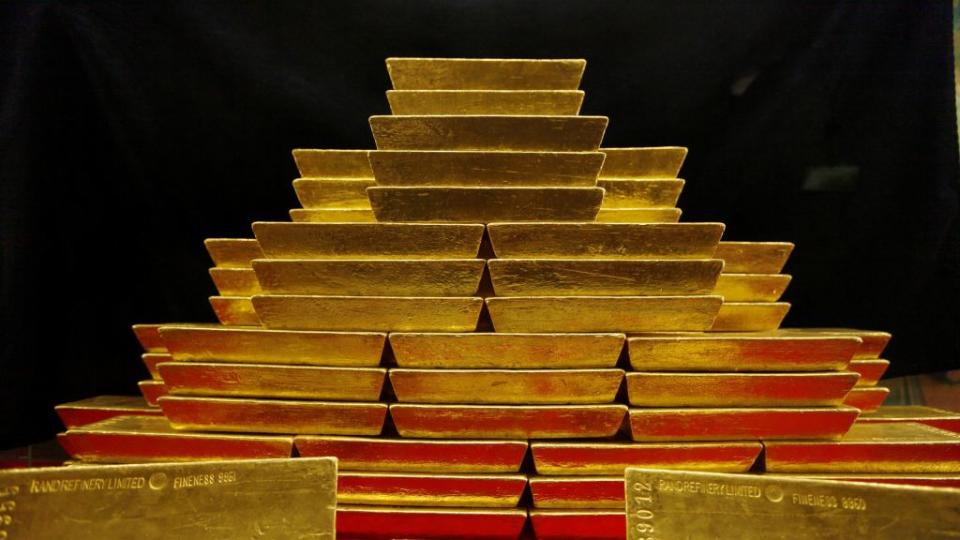Britain’s mint is trying to make gold act more like bitcoin

Blockchain technology is about to come full circle. The technical ideas that allow bitcoin, designed as a form of digital gold, to operate will soon be used by the UK’s government-owned Royal Mint in a new gold-trading system.
The 1,000-year-old Royal Mint is working with CME Group—the world’s largest futures exchange operator—to put $1 billion worth of gold on a blockchain sometime next year. The idea is to allow customers to own and trade fractions of gold, stored in the Mint’s vaults, using a new digital token called Royal Mint Gold (RMG). Each RMG equates to a gram of gold.
The new scheme cuts out the management fees and storage costs that current spot-trading in gold incurs. The Mint, for instance, charges between 0.5% and 1% of the average value of a customer’s holdings for using its vault.
A blockchain reduces the administrative headaches of deciding who owns what fraction of a gold bar—which is one of the technology’s key promises.
For instance the bitcoin blockchain, the world’s largest and most robust, is a record of every bitcoin transaction ever performed. But it’s not maintained by any one entity, because that would be a lot of work for anyone; instead, it’s shared among anyone running the bitcoin software. A set of rules hard-coded into the bitcoin protocol—the so-called “Nakamoto consensus“—allows these disparate parties to agree on one set of transactions at all times.
For the Royal Mint and gold trading, a blockchain is particularly fitting since bitcoin itself is modeled on the precious metal. Like gold, bitcoin has a limited supply. New coins must also be “mined” before they are added to the monetary base. The steady addition of new coins “is analogous to gold miners expending resources to add gold to circulation,” wrote bitcoin’s creator, the pseudonymous Satoshi Nakamoto, in the cryptocurrency’s founding document (pdf).
But, since bitcoin is open-source and anyone can become a miner, the pool of traders of the commodity can’t easily be controlled. The bitcoin blockchain is also not cheap to maintain, since the professionalization of the bitcoin world means miners now operate gigantic server farms, and develop their own special mining chips, to remain competitive.
This explains the gold rush (so to speak) among blockchain purveyors to create systems—the term of choice at the moment is “distributed ledger technology”—that take the bitcoin blockchain’s distributed nature while adding greater control over participants, and doing away with the expensive mining process.
These systems are being applied to various commodities, from equities to debt instruments. Several big players are taking a shot at gold, ranging from consulting firm EY to the traders made famous by Michael Lewis’s bestseller Flash Boys.
The effort by the Royal Mint and CME Group could be the first commercially available project. Beyond making life easier for gold market participants, it could be notable for bucking the trend of blockchain ideas failing to jump the hurdle from proof-of-concept to commercial reality.

Sign up for the Quartz Daily Brief, our free daily newsletter with the world’s most important and interesting news.
More stories from Quartz:

 Yahoo Finance
Yahoo Finance 